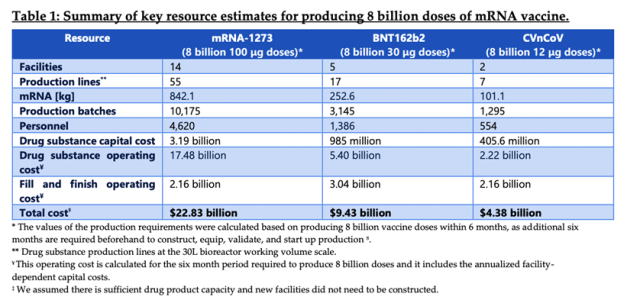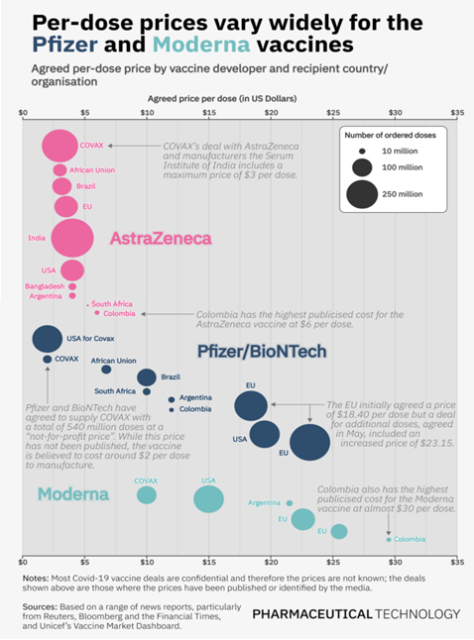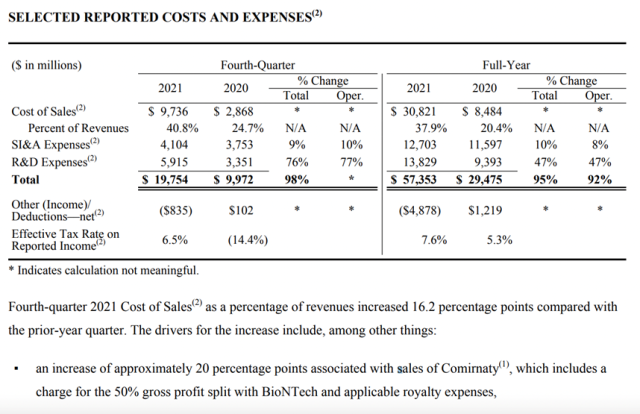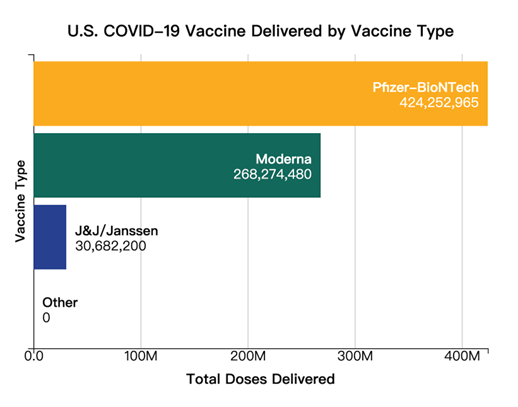$36.8 billion vs $17.7 billion: Why did Pfizer beat Moderna on COVID-19 vaccine?
- What are the WHO recommendations for Japanese encephalitis vaccines?
- Individuals Carrying Two APOE4 Copies Likely to Develop Alzheimer’s Disease Symptoms
- What Is The Role of Lactic Acid in Tumor Growth and Therapy Resistance?
- The Enigma of Beethoven’s Deafness: Unveiling the Role of Lead Poisoning
- World First Autologous Regenerated Islet Transplantation Successful
- FDA Approved Opdualag: The First Immunotherapy Targeting LAG-3
$36.8 billion vs $17.7 billion: Why did Pfizer beat Moderna on COVID-19 vaccine?
- AstraZeneca Admits for the First Time that its COVID Vaccine Has Blood Clot Side Effects
- Was COVID virus leaked from the Chinese WIV lab?
- HIV Cure Research: New Study Links Viral DNA Levels to Spontaneous Control
- FDA has mandated a top-level black box warning for all marketed CAR-T therapies
- Can people with high blood pressure eat peanuts?
- What is the difference between dopamine and dobutamine?
- How long can the patient live after heart stent surgery?
$36.8 billion vs $17.7 billion: Why did Pfizer beat Moderna on COVID-19 vaccine?
Since the outbreak of the COVID-19 epidemic in 2020, it has spread rapidly around the world in just a few months. Vaccines are recognized as the most cost-effective way to end the epidemic, and mRNA vaccines are a technological pioneer.
In the mRNA vaccine market, Comirnaty jointly developed by Pfizer/BioNTech and Spikevax developed by Moderna are the protagonists of the struggle. In December 2020, they successively obtained FDA emergency use authorization for the prevention of COVID-19s.
At the beginning of the competition, Spikevax developed by Moderna was predicted to be “the most sought-after COVID-19 vaccine in developed markets”, but the actual commercialization performance was far inferior to that of Pfizer, which was less than half of the latter’s annual revenue.
According to the financial report, Spikevax developed by Moderna will produce about 800 million doses in 2021, with total sales of $17.7 billion, while Comirnaty jointly developed by Pfizer/BioNTech will produce more than 3 billion doses in 2021, with total sales of $36.8 billion.
At present, Comirnaty has covered 159 countries around the world, and Spikevax has covered 91 countries.
Comirnaty has also become the pinnacle of Pfizer’s performance turnaround, which has made its performance soar.
Pfizer’s financial report shows that the company’s total operating income in fiscal year 2021 is as high as US$79.5 billion, a 92% increase in revenue compared to fiscal year 2020, mainly due to the revenue from orders signed by the COVID-19 vaccine Comirnaty in the global market.
In fact, Spikevax, developed by Moderna, proved to be superior to Pfizer/BioNTech’s Comirnaty in terms of vaccine prophylaxis, but it failed to sell the latter.
Analysts tries to analyze the reasons behind it. Of course, Moderna has earned tens of billions of dollars in revenue from the COVID-19 vaccine, which is already a model for Biopharma, but there are still areas that can be optimized compared to Pfizer, which may provide China’s Biotech to grow into a global Biopharma. Inspire and learn from.
From the perspective of the preventive efficacy of the vaccine, Moderna seems to be even better.
The Lancet will publish an observational study in the United States in 2022, enrolling more than 2 million eligible vaccine recipients, and comparing the real-world effectiveness of the two vaccines. Results: Absolute infection rates, hospitalization rates, and mortality rates were lower in both vaccine groups, compared with Comirnaty (BNT62b2), inoculation with Spikevax (mRNA-1273) caused SARS-CoV-2 infection and was associated with SARS-CoV-2 were significantly lower in hospitalization, and the difference was greater with longer follow-up after vaccination.

Lancet magazine doi: 10.1016/j.eclinm.2022.101326
It can be seen that the effectiveness of Moderna’s COVID-19 mRNA vaccine is not inferior to Pfizer/BioNTech, or even better, but the sales in 2021 are less than half of Pfizer’s vaccine. The reasons for this gap are summarized as follows.

Data source: How to make enough vaccine for the world in one year from Imperial College London
First, the pricing of Pfizer’s vaccine is more advantageous than that of Monard. Because the U.S. government has not requested a vaccine cost basis, companies are currently keeping the cost of manufacturing the vaccine secret.
Regarding the cost estimates of the two mRNA vaccines of Pfizer and Moderna, the team from Imperial College London conducted an estimation study.
The results show that: based on the assumption of 8 billion doses of vaccine production capacity per year, the estimated cost of Moderna vaccine is about US$2.85 per dose (the first in the above figure). Column: mRNA-1273).
Because Pfizer’s vaccine uses fewer components of mRNA, fewer production lines, personnel and other resources, the cost is lower than Moderna’s vaccine, about $1.18 per dose (second column in the above figure: BNT62b2).
The estimated cost mainly includes the cost of vaccine production equipment, production lines, employees, vaccine raw materials and packaging, and takes into account the possible cost increase caused by maintaining the supply chain during the epidemic.
Correspondingly, the pricing of Pfizer’s and Moderna’s vaccines is in line with the cost estimates.
Except for the price of Moderna in the United States, which is slightly lower than that of Pfizer, the price of Moderna in most other markets outside the United States is higher.
According to the supply agreement between Pfizer and the U.S. government, the price of the vaccine is about US$19.5 per dose, and the price for EU countries is US$23.15 per dose.
While Moderna’s agreement with the United States is $15 per dose, for markets outside the United States, especially for orders with smaller doses, a single-dose vaccine is priced as high as $30.
Lower prices can enable Pfizer’s vaccines to win more vaccination orders, cover a larger population, and thus achieve better commercial performance.

Image source: Pharmaceutical Technology.com
Second, as a clinical-stage biotech, Moderna lacks the brand name and proven supply chain of a big pharma company like Pfizer.
Since its establishment, Moderna has mainly focused on the research and development of mRNA technology.
It has no real manufacturing experience, and has never produced or sold drugs in the commercialization stage before.
Therefore, the production of Moderna’s COVID-19 vaccine has always adopted the mode of cooperation with multiple partners: the key mRNA active ingredients of the vaccine will be produced in New Hampshire and Switzerland by the Swiss company Lonza; the lipids used to deliver the mRNA will be produced by CordenPharma in Germany; The vial filling and packaging will be handled by Catalent.
This model has led to a serious dependence on the production of Moderna’s vaccine. Under the predicament of many countries restricting the export of raw materials under the epidemic, the production and supply of Moderna’s vaccine has repeatedly failed to keep up with the number of orders that have been signed.
In contrast, Pfizer has a mature supply chain and deeper pockets. The oils and fats required for the production of COVID-19 vaccines are the limiting factor for the mass production of any mRNA vaccines.
Pfizer’s manufacturing department immediately decided to produce by itself instead of relying on the outside world after realizing the various uncertainties under the epidemic. plant to support the supply of vaccine raw materials.
Pfizer CEO Dr. Albert Bourla mentioned in the book “Moonshot”: “The development of vaccines is a race against the virus. In the process of research and development of the COVID-19 vaccine, Pfizer’s entire company has almost put aside all the considerations of cost, and put all the links to the best of their ability. Parallel to the greatest possible extent, ready for full production at any time.”
Dr. Albert Bourla also said: “Pfizer has adopted an all-in strategy for the Comirnaty COVID-19 vaccine, which is also consistent with Pfizer’s corporate philosophy.”
It is precisely based on stronger supply chain and financial strength that Pfizer can execute faster than Moderna and seize the market faster.
Third, political factors and sales input contributed greatly. Compared to Moderna’s often volatile supply chain issues, the Biden administration chartered the Defense Production Act (DPA) to help Pfizer quickly procure the equipment it needs.
They are also US-based companies. Pfizer, which has a longer history, operates deeper government relations in the United States, which facilitates its mobilization of public resources in special times.
In addition, according to the 2021 financial report, Pfizer’s sales expenses were as high as $30.8 billion, accounting for 37.9% of the year’s revenue.
This staggering figure has more than tripled compared to the $8.4 billion in 2020, and about 20% of the growth is said to be related to the sales of Comirnaty’s COVID-19 vaccine, which also contributed to the good commercialization of Pfizer’s COVID-19 vaccine.

Image source: Pfizer’s 2021 earnings report
Although the performance of Moderna and Pfizer is different, it has to be admitted that both companies are actually winners in the COVID-19 vaccine market.
Taking the US market as an example, the US vaccine market data shows that the vaccines approved and recommended by the US FDA and CDC come from Pfizer, Moderna, and Johnson & Johnson.
According to the data of the US CDC as of April 2022, the actual number of doses of Pfizer’s Comirnaty vaccine delivered and vaccinated is as high as 424 million, accounting for nearly 60% of the US vaccine market, while the Moderna vaccine is only 268 million doses, accounting for 37%.
Johnson & Johnson’s vaccine shows a disadvantage due to clinical stage data, and its effectiveness is lower than the previous two, accounting for only about 4% of the US COVID-19 vaccine market share.

Image source: US CDC official website data as of April 2022
Sum up:
In the vaccine development stage, Pfizer and Moderna significantly lead other mRNA vaccine companies with “speed”, which is the common success of the two companies.
In the past, Moderna focused on mRNA technology conquest. The so-called “training soldiers for a thousand days, and using them for a while”, Moderna can be on a par with leading companies such as Pfizer in the speed of mRNA vaccine development, thanks to its excellent technology.
In contrast, Pfizer’s mRNA technology is not its strong point, but it won at the beginning of the vaccine development. It accurately selected mRNA technology as the core technology of the COVID-19 vaccine and determined the cooperation model, and made up for its own technology by cooperating with Baintech, which is a leader in mRNA technology. of insufficiency.
In addition to “speed”, the stable “supply” under the epidemic has become the main reason why Pfizer/BioNTech beat Moderna to become the biggest winner. Maybe some people say that because Pfizer is a big company, which of course is part of the reason.
However, before the COVID-19, the annual production capacity of all Pfizer vaccine products was only 200 million doses, but in 2021, it will be firmly in the first place with 3 billion doses.
Among them, the vaccine raw materials, equipment, employees, The careful deployment of the production plant boldly breaks the order of R&D and then production, and prepares all production elements in the R&D stage to prepare for full production at any time.
Another point is that in the process of overcoming suffering, the ability of leaders to give teams goals and visions is also worth learning from.
Pfizer CEO Dr. Albert Bourla also mentioned in the book “moonshot”: “Give Pfizer employees hard-to-achieve goals, and everyone will plan the timeline from a new perspective. Only innovation can make the impossible possible.”
References:
[1]The New YorkTimes. (2022). Available at:
https://www.nytimes.com/interactive/2021/world/covid-vaccinations-tracker.html
[2]Pfizer.(2021) Available at:
https://www.pfizer.com/sites/default/files/investors/financial_reports/annual_reports/2021/story/expanding-covid-manufacturing-efforts/
[3]Moderna. (2021).Available at:
https://s29.q4cdn.com/435878511/files/doc_financials/2021/ar/Moderna-2021-Annual-Report.pdf
[4]Ioannou, G. N., et al. (2022). ‘Comparison of Moderna versus Pfizer-BioNTechCOVID-19 vaccine outcomes: A target trial emulation study in the U.S. VeteransAffairs healthcare system’. eClinicalMedicine, 45, 101326.
[5]Light,D. W, et al. (2021). ‘The costs of coronavirus vaccines and their pricing’. Journal of the Royal Society of Medicine,114, pp:502-504.
[6]Centers forDisease Control and Prevention. (2022). Available at:
https://covid.cdc.gov/covid-data-tracker/#vaccinations_vacc-total-admin-rate-total [Accessed at: April 2022]
$36.8 billion vs $17.7 billion: Why did Pfizer beat Moderna on COVID-19 vaccine?
(source:internet, reference only)
Disclaimer of medicaltrend.org
Important Note: The information provided is for informational purposes only and should not be considered as medical advice.



